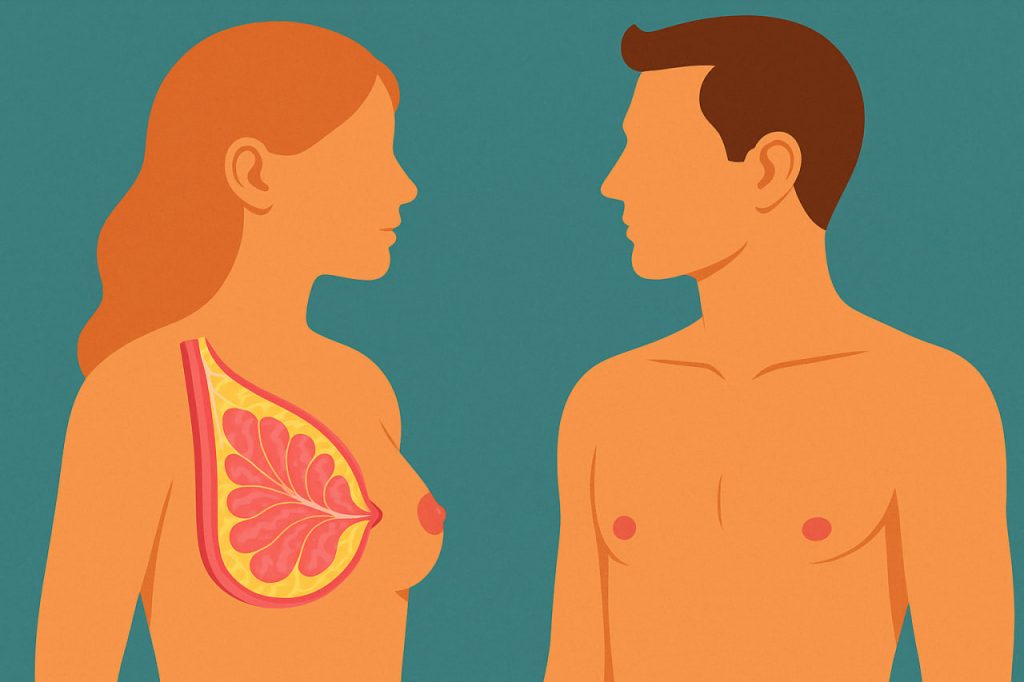The difference in breast size between women and men is one of the most distinct physical traits of human biology. While both sexes are born with breast tissue and mammary glands, only women develop larger and fully functional breasts. This difference is influenced by hormones, reproductive biology, and evolutionary factors.
Biological Basis
- Both males and females have mammary glands at birth.
- During puberty, the female body produces higher levels of estrogen and progesterone, which stimulate the growth of mammary glands and fat deposits in the breast area.
- In men, testosterone suppresses breast tissue development, so their breasts remain small and flat.
Role of Fatty Tissue
Female breasts are made up of glandular tissue (which produces milk) and fatty tissue (which determines size and shape).
- Women naturally accumulate more fat in the breast area due to their biological role in reproduction.
- Men generally have less fat in this area because of hormonal differences and body composition.
Function of Female Breasts
- Milk production (lactation) – After childbirth, breasts produce milk to nourish infants.
- Reproductive signaling – Breasts also act as a secondary sexual characteristic, indicating fertility and maturity.
Why Men Have Nipples and Small Breasts
- Embryos start development with the same base structures.
- Nipples and small amounts of breast tissue form before sex hormones influence the body.
- Since testosterone limits breast growth in men, they keep only small, non-functional breast tissue.
Evolutionary Perspective
- Unlike most mammals, human females have permanently enlarged breasts, even outside breastfeeding periods.
- Scientists suggest this may be linked to sexual selection — breasts acting as a visual signal of health and fertility.
When Men Develop Larger Breasts
Some men may experience gynecomastia, a condition where hormonal imbalances (higher estrogen or lower testosterone) cause breast enlargement. This can happen in puberty, with certain medications, or due to health issues.
Conclusion
Women’s breasts are larger than men’s mainly because of hormonal differences and their role in reproduction and infant feeding. While both sexes share the same basic breast structures, female breasts develop more due to estrogen and fat storage, making them one of the most visible differences between male and female bodies.
Glossary
- Estrogen – the main female hormone responsible for breast development.
- Progesterone – a female hormone important for breast growth and pregnancy.
- Testosterone – the main male hormone that prevents breast enlargement.
- Mammary glands – glands in the breast that produce milk.
- Gynecomastia – the medical term for enlarged male breasts.


